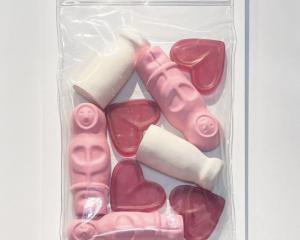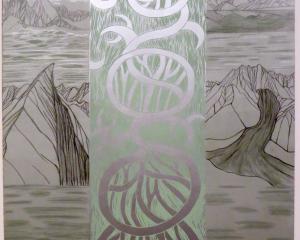''True stories/Scripted realities'' is a series of video installations, each examining the nature of reality in narrative. Bridging the borders between naturalistic and scripted, truth and propaganda, the artists have produced ''mediated accounts''. Each plays with the concepts of cinematic truth and its manipulations.
The installations attack the theme from disparate but overlapping angles. Liam Gillick and Anton Vidokle question the nature of art within society through discussion and through the re-creation of discussion as a stage play. Andrea Geyer looks at political and judicial courts as stage performance, presenting a re-enactment of Adolf Eichmann's war crimes trial using a single actor in multiple roles. Kerry Tribe also delves into criminal trials, examining the limits and power of re-enactment and its potential both to enhance and to mislead a case.
Omer Fast's The casting is an intriguing work featuring a discussion with a returned soldier. Two of his anecdotes, one of Iraq and one of Germany, have been interwoven into one narrative. The non-sequitur cuts between the two become disturbing as the nature of memory and reality are called into question by the work. In the final set of videos, by Yael Bertana, the tools of political propaganda are brought to bear with great effect on a tale of a revival of European Jewish culture.
Maori cosmology provides the spark of inspiration for a series of abstract works by James Bellaney at Mint Gallery.
The protagonists of the Maori creation myth are the earth and sky, Papatuanuku and Ranginui, pushed apart by their son Tane, along with Tawhirimatea, the weather god, whose constant winds are evidence of his anger at what his brother Tane has done. Hine-nui-te-po, goddess of the underworld and sunset is also evoked in these paintings.
The mixed-media pieces, which have watercolour as a main element, use an effective limited palette of earth tones, blacks, and whites. Highlighted elements in bright red provide some needed colour to the works. These are colours which reflect both the mud and stone of newly-formed earth and the traditional colours of pre-colonial Maori art. A constant element in the works is the circle, its strong, complete form indicating the cycle of life and of karma, and also of the oneness of all creation.
An aleatory element has been introduce to the works by means of using a cut-up technique to arrive at the titles of the paintings and of the exhibition itself. In this way, viewers can read into the titles whatever they wish, potentially colouring their views of the works' natures.
Cath Cocker's brief exhibition (which ends tomorrow) at the Dowling Street Project space attempts to tie together several broad concepts of literal and metaphorical colonialism.
Drawing from influences ranging from Vitruvius to Duchamp by way of Leonardo da Vinci and Orientalism, the artist has produced three interconnected installations. The central work is an inverted Marxist statement - opium as a religion for the masses, the poppies arrayed as the characters in Leonardo's Last Supper. Each individual string-and-paint work is well crafted, the whole serving as a poignant statement of the striving for the unobtainable nirvana and crushing downside of both drugs and religion.
A quotation by William Burroughs provides the title for Le Hombre Invisible, a delicate oriental screen lit from behind and again featuring a tracery of poppy patterns. The colonial history which sought to keep China dependent on opium and render a potential power as an invisible, silent force is here invoked.
Between these two works is a smaller, gentle installation, yet one which draws from older sources, namely master Roman architect and military engineer Vitruvius, and the legend of Tantalus - tortured by being close to water yet unable to drink. The Tantalus legend again reflects the idea of the quest for the unobtainable, as offered by the drugs of opium and religion.







![Untitled (c. mid 1990s, [pink 3]), by Martin Thompson, 415mm×590mm. Photo: courtesy of Brett...](https://www.odt.co.nz/sites/default/files/styles/odt_landscape_small_related_stories/public/story/2024/02/untitled_pink_3.jpg?itok=Q0aQrc9o)




